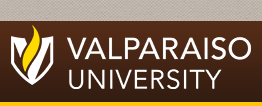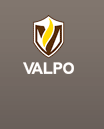Level of Education of Students Involved
Undergraduate
Faculty Sponsor
Dr. Adam Gibson
College
College of Arts & Sciences (CAS)
Discipline(s)
Physics
ORCID Identifier(s)
0009-0008-0839-627X
Presentation Type
Poster Presentation
Symposium Date
Spring 4-24-2025
Abstract
Probing the gluon’s contribution to proton spin is an important goal of the STAR experiment at the Relativistic Heavy Ion Collider (RHIC) located at Brookhaven National Laboratory. We aim to refine our knowledge of the gluon spin contribution to aid in solving the proton spin puzzle as the contributions of the proton’s constituent parts to its spin remain uncertain. In this analysis, we utilize 52 pb-1 of longitudinally polarized proton-proton (p+p) collision data taken by the STAR experiment at √s = 200 GeV. Our measurement uses the Endcap Electromagnetic Calorimeter (EEMC), which is stationed at a pseudorapidity range of 1.1 < η < 2.0 and can detect photons from the decays of neutral pions (π0s). A new data quality assurance (QA) method has been implemented, which increases the number of entries in QA histograms such as the reconstructed π0 mass, signal fraction, and number of towers hit in the EEMC. The original QA method suffered from accidental numerical losses of π0 candidates due to ROOT command line methods, while the new method recovers them using full STAR libraries. The revised data will be used to calculate the spin-dependent asymmetry of π0 production (ALL), which is sensitive to the gluon’s contribution to the proton’s spin. The status and impact of the new quality assurance method will be presented, along with prospects for the ALL measurement.
Recommended Citation
Noga, Christopher, "Probing Gluon Contribution to Proton Spin with STAR 2015 Endcap Electromagnetic Calorimeter Data" (2025). Symposium on Undergraduate Research and Creative Expression (SOURCE). 1380.
https://scholar.valpo.edu/cus/1380



Biographical Information about Author(s)
Christopher Noga is a third-year astronomy student interested in computational studies of high-energy systems. He is excited to work for Argonne National Laboratory, participating in the Lee Teng Fellowship, an Accelerator Science-focused project geared towards undergraduate-level students.